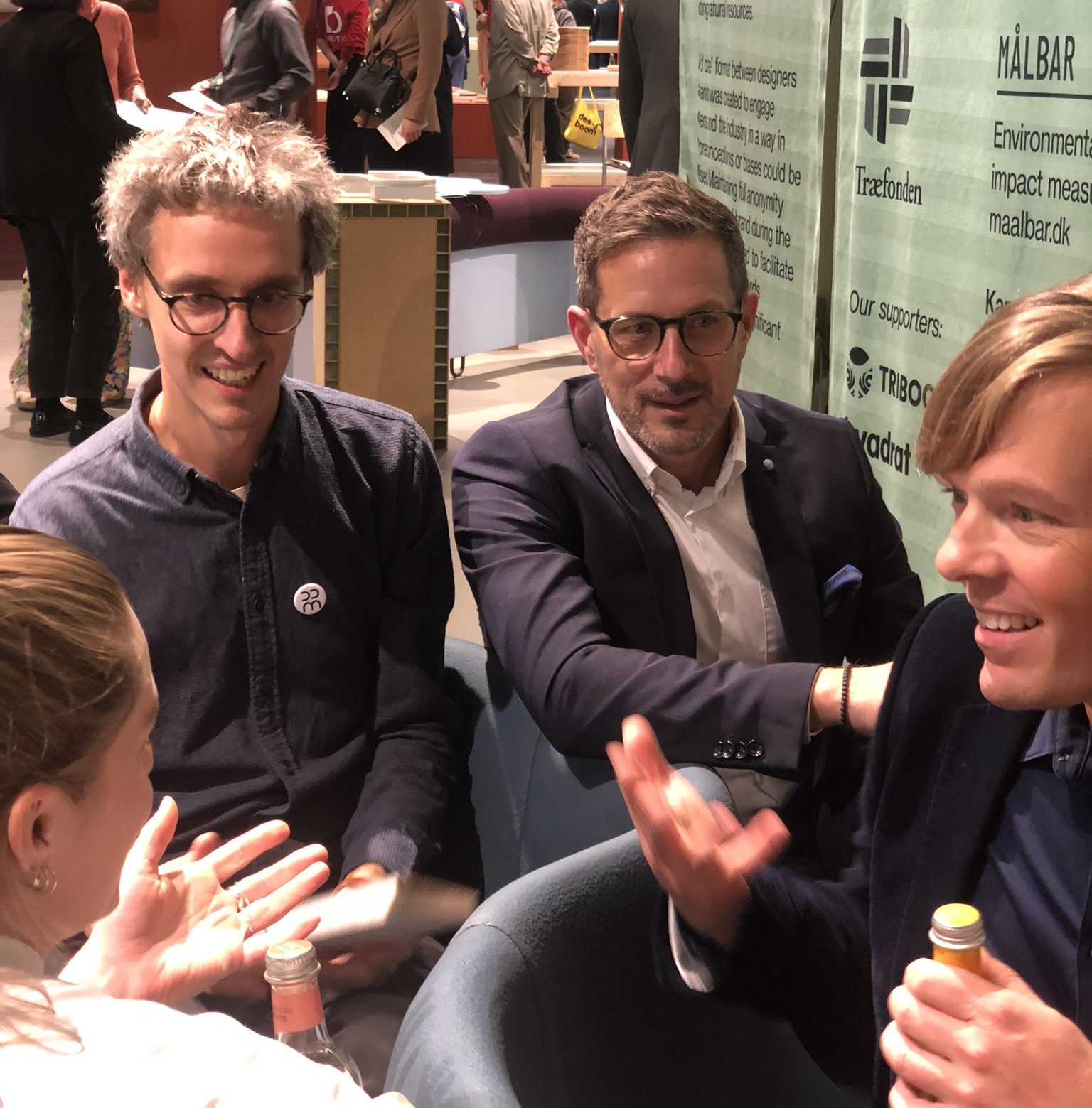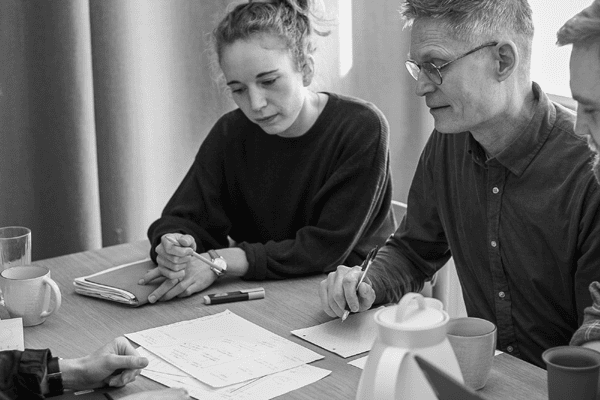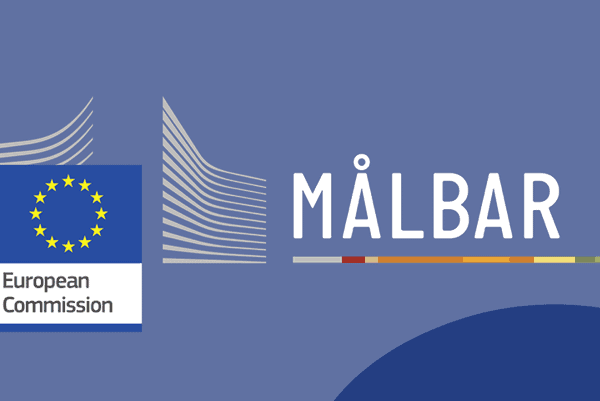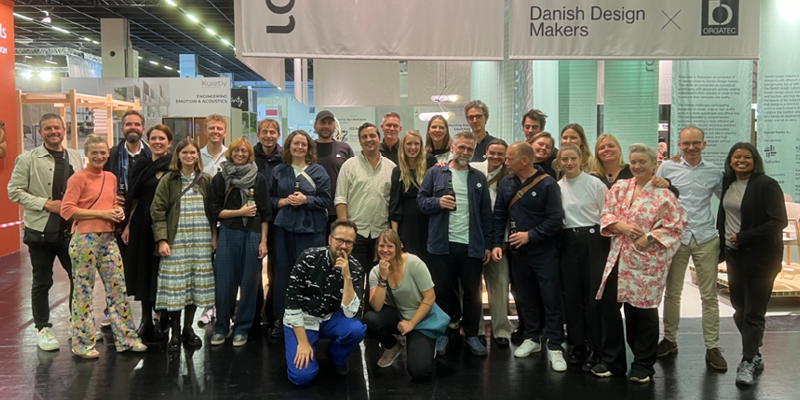
Reflecting on a successful fair
Målbar was recently part of a truly great exhibition with Danish Design Makers at ORGATEC Cologne. The collaboration between our three organisations began in February and culminated at a big blind date reveal at the ORGATEC fair on October 22nd-25th.
The project involved 25 experienced designers and 12 renowned European furniture companies. In the beginning, these were anonymous to each other. The companies provided 12 furniture briefs that were randomly distributed between the designers. On top of this challenge of creating a design for a specific but unknown brand, the designers were also working under the overarching theme of reduction. And for this purpose, Målbar made our screening tool available to all the designers.
During the next 6 months, the designers worked to answer their briefs while trying to minimise the climate footprint of their designs.
Now, all parties are reflecting upon this intense project and process.
The blind date concept promises well
From Målbar’s point of view, our participation was a success. We have expanded our network, created new valuable contacts and relations, and learned more about our different audience groups.
Danish Design Makers are also perceiving the blind date experiment as quite a success.
“This might have been our most successful exhibition ever”, says Thomas Albertsen, co-founder of DDM.
Previously, DDM have struggled to attract the industry and the right people to their exhibitions. It has sometimes been a challenge to make visitors understand that their designs are prototypes that are up for sale. On the other hand, it has been a deliberate strategy not to involve the industry in their projects, because they wish to control their own conditions. DDM doesn’t want to have corporate companies to label their work from the beginning, because it might let visitors to believe that their designs are already owned and that the sponsoring companies have determined the designers’ outcomes.
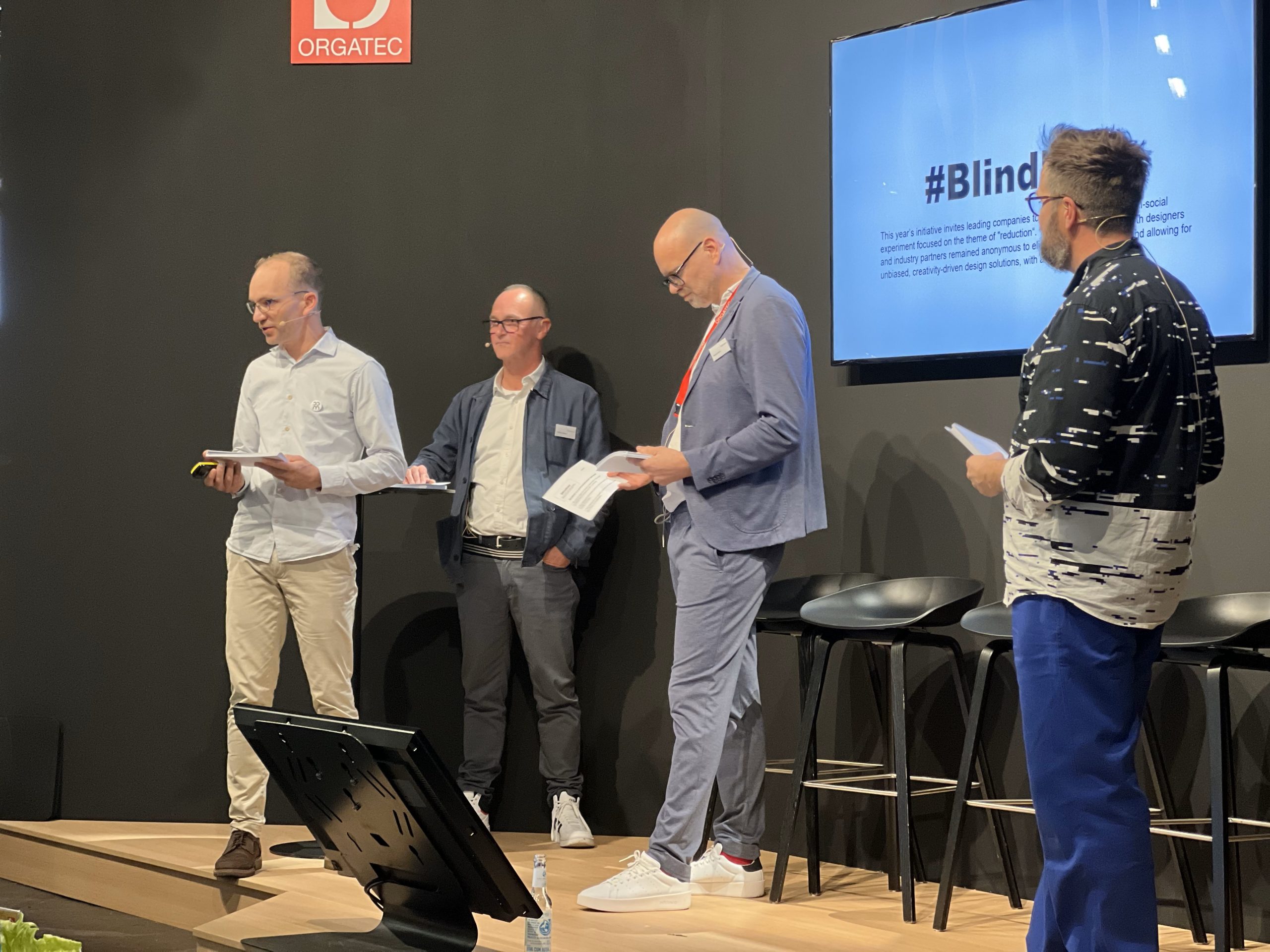
This project has proven to be a win-win-win setting. As designers, we haven’t been controlled by the brands, because we didn’t know who provided our briefs. But at the same time, these companies had a stake in the project from the beginning and thus they showed up to the reveal party and saw all our prototypes, listened to us, and showed true engagement in our exhibition, our design thoughts, and our reduction attempts. I can’t believe we haven’t done this before”, says Thomas.
He estimates that usually 1-2 designers leave such a fair with a really good contact. This time, around 8-10 of them have made favourable relations. Maybe not with their own blind date, and maybe the companies aren’t interested in the displayed design but sees potential in the specific designer.
“It is still too early to say anything about how many will close a deal based on this fair. These things take time. We designers have a lot of work to get back to and so does the companies”, Thomas reminds.
Let’s do it again
From the start, DDM had their doubts about whether the participating brands would get something out of the collaboration.
“The companies didn’t really know what they bought into. And neither did we, really. When we applied for funding for this project, it was really challenging for us to explain the whole concept. But in the end, it was my clear understanding that the brands were positively surprised about it all, and many of them have implied that they would participate once more if we were to repeat the project”, says Evalou Hauge, DDM board member.
In general, designers felt well-received and listened to by their blind date companies. And many feel that they now have a new way into the industry.
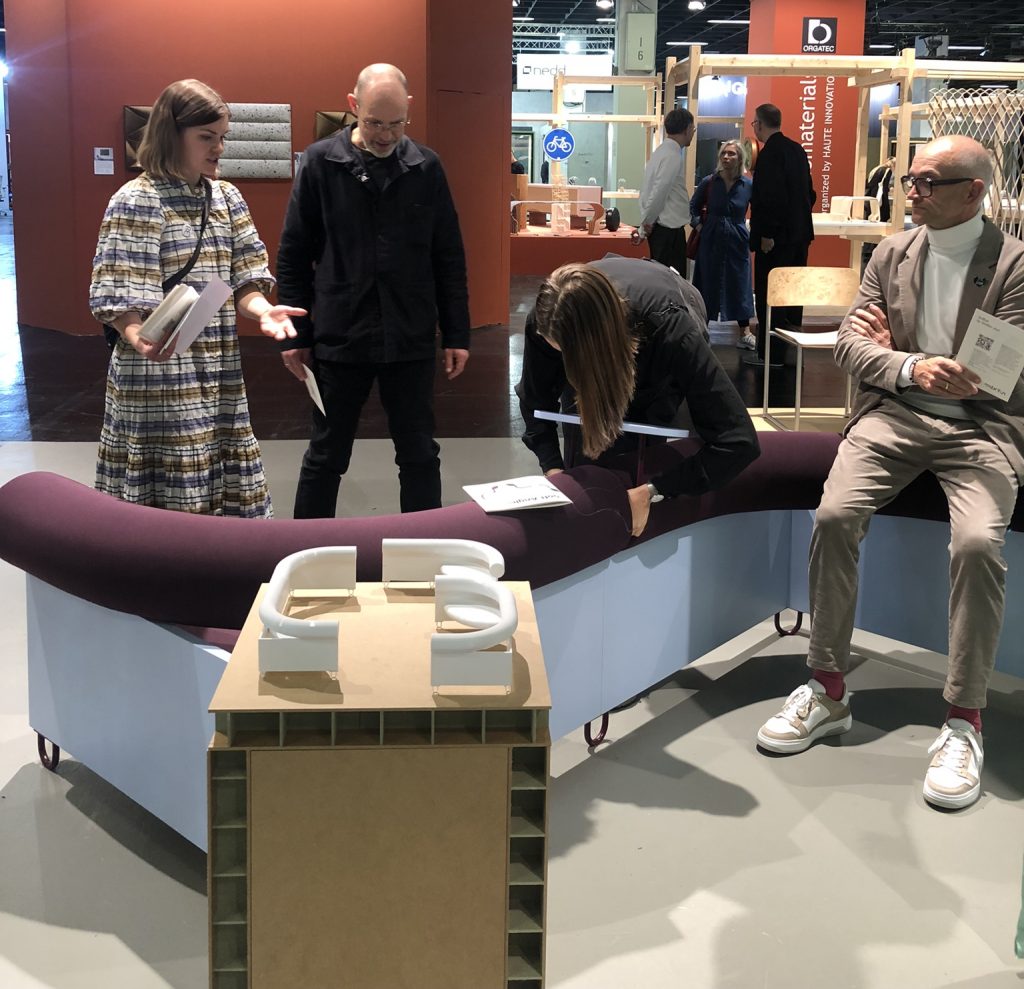
Mutual understanding is a key to success
Another important reason for the success was that ORGATEC got involved and really prioritised the project and the blind date reveal event.
According to Thomas Postert, Director at ORGATEC and Markus Schlosser, Sales Manager at ORGATEC, a key factor for the successful collaboration between our three organisations was a mutual understanding of the importance of the subject and individual expertise in various aspects relevant to it.
From the very beginning, there was on open and honest exchange on what was needed to push the project forward. Everyone involved got on well both on a personal and professional level. This made it so much easier to trust that the outcome would be as outstanding and beneficial to everyone involved as it was”, says Markus.
According to Thomas Postert, the blind date experiment created a new highlight for ORGATEC and provided another good reason for visitors to attend the show and be inspired. As a concept, the blind date managed to interest manufacturers to partially let go of individual design beliefs and allow themselves to get inspired by these liberated design ideas. It got the industry talking about design and resource efficiency.
“ORGATEC will continue to promote and support the transition to a more sustainable future. Both through constantly improving the CO²e footprint of the show itself, the Koelnmesse premisses, and of course by continuing to create events like blind date. We wish to establish industry meeting points to further improve and promote the importance of the issues within the industry and amongst our clients”, he says.
Blind date and reduction were a good match
In the end, it also showed to be less of a challenge and more of an advantage to have the two themes of blind date and reduction play together. Together, we succeeded in communicating both topics and they were elegantly balanced during the exhibition days. DDM and Målbar had a good synergy on the stand, supporting each other in communicating reduction attempts, material choices, design choices, etc.
It seemed like most of the blind date companies already worked with different levels of sustainability, but still they were inspired by the showcases.
Designers have been free to work creatively with minimizing the climate impact of their designs and have received Målbar’s screening tool quite well. It has increased the participants’ awareness about the impact of materials and production processes, and Målbar has obtained a deeper understanding of the conditions of the design process.
